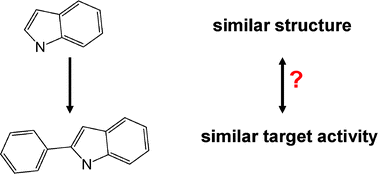Many structurally related drugs bind different targets whereas distinct drugs display significant target overlap
Abstract
Currently available

* Corresponding authors
a
Department of Life Science Informatics, B-IT, LIMES Program Unit Chemical Biology and Medicinal Chemistry, Rheinische Friedrich-Wilhelms-Universität Bonn, Dahlmannstr. 2, D-53113, Bonn, Germany
E-mail:
bajorath@bit.uni-bonn.de
Fax: +49-228-2699-341
Tel: +49-228-2699-306
Currently available

 Please wait while we load your content...
Something went wrong. Try again?
Please wait while we load your content...
Something went wrong. Try again?
Y. Hu and J. Bajorath, RSC Adv., 2012, 2, 3481 DOI: 10.1039/C2RA01345B
To request permission to reproduce material from this article, please go to the Copyright Clearance Center request page.
If you are an author contributing to an RSC publication, you do not need to request permission provided correct acknowledgement is given.
If you are the author of this article, you do not need to request permission to reproduce figures and diagrams provided correct acknowledgement is given. If you want to reproduce the whole article in a third-party publication (excluding your thesis/dissertation for which permission is not required) please go to the Copyright Clearance Center request page.
Read more about how to correctly acknowledge RSC content.
 Fetching data from CrossRef.
Fetching data from CrossRef.
This may take some time to load.
Loading related content
